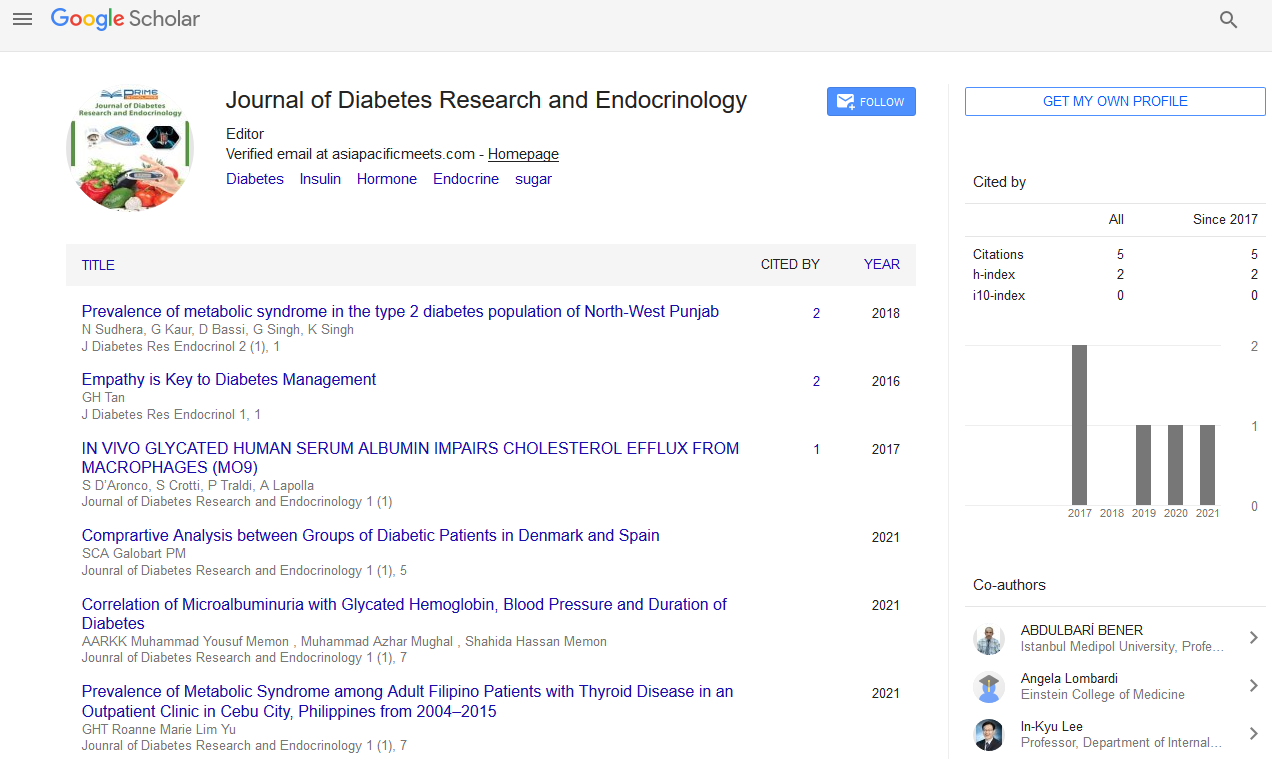Commentary - (2023) Volume 7, Issue 2
Food Sources with a High Glycemic Record Quickly Release Glucose and Raise Blood Glucose Quickly
Maren Carstensen*
Department of Nutrition, Paderborn University, Germany
*Correspondence:
Maren Carstensen,
Department of Nutrition, Paderborn University,
Germany,
Email:
Received: 31-May-2023, Manuscript No. IPJDRE-23-16868;
Editor assigned: 02-Jun-2023, Pre QC No. IPJDRE-23-16868;
Reviewed: 16-Jun-2023, QC No. IPJDRE-23-16868;
Revised: 21-Jun-2023, Manuscript No. IPJDRE-23-16868;
Published:
28-Jun-2023, DOI: 10.36648/ipjdre.7.2.17
Description
Diabetes patients going through PD might find it simpler to
control their glucose levels because of the progressive ingestion
of glucose and insulin and their constant mixture into the
peritoneal pit. Glycemic control is the best serum glucose fixation
in diabetic patients. It is basic to perceive factors influencing
the glycemic control of patients to forestall control and difficulties.
Increased glycemic control reduces the risk of micro
vascular complications in both Type 1 and Type 2 diabetes, and
long-term treatment and follow-up studies have shown that
underlying serious control is linked to reduced cardiovascular
risk. The pancreas, an organ behind the stomach, is where
beta cells are found. In order to maintain precise blood glucose
levels, insulin levels in the circulatory framework are carefully
adjusted. Sugar moves out of the circulatory system and into
muscle, fat, and liver cells, where it is quickly metabolized. Poor
glycemic control might be exacerbated by factors connected
with both the patient and the clinical consideration supplier.
Glycemic control is thought to be influenced by age, sex, preparation,
intimate status, BMI, smoking, diabetes duration, and
medication type. A portion of the difference between eating
a standard amount of glucose and eating a specific starch—a
food that contains sugar—that causes an increase in blood
glucose—a type of sugar. Food sources with a high glycemic
index quickly release glucose and raise blood glucose quickly.
Using its different chemicals, especially glucagon and insulin,
the pancreas keeps blood glucose levels inside an extremely
limited scope of 4-6 mm. This preservation is accomplished by
the going against and changed exercises of glucagon and insulin,
which is called glucose homeostasis. Ice cream and other
concentrated sweets with a low glycemic index but high calorie
content should be reserved for special occasions. Reduce regular
thing press to something like one-half cup a day. Totally wipe
out refreshments with added sugar. Eat an empowering kind of
protein, like beans, fish, or skinless chicken, at most feasts. Apples
can be a good snack for diabetics. Fiber in fructose might
assist with forestalling spikes in glucose and insulin levels, and
it could be preferable for insulin levels over glucose. Also, apples
are well off in supplements. Poha or Smoothed Rice is less
managed than white rice and has more improvements like iron,
carbs, and proteins. It is safe for diabetics to consume because
it is light on the stomach and does not raise glucose levels. The
most conventionally elaborate test for noticing determined
glycemic the board is glycated haemoglobin A1C, haemoglobin
A1C, HbA1c, which shows ordinary levels of blood glucose over
the beyond a couple of months. It is utilized to explore diabetes
and to screen the common sense of treatment. Even though
drinking lemon water will not directly lower your glucose levels,
it can certainly help prevent sudden spikes. The beverage is
easy to get ready, contains not many calories and carbs, and it
helps diabetics by keeping them hydrated. Standard ginger use
oversees insulin and lower glucose levels. Eat consistently, and
don’t skip feasts.
Acknowledgement
None.
Conflict Of Interest
The authors declare that they have no conflict of interest.
Citation: Carstensen M (2023) Food Sources with a High Glycemic Record Quickly Release Glucose and Raise Blood Glucose Quickly. J Diab Res Endocrinol. 7:17.
Copyright: ©2023 Carstensen M. This is an open-access article distributed under the terms of the Creative Commons Attribution License, which permits unrestricted use, distribution, and reproduction in any medium, provided the original author and source are credited.

